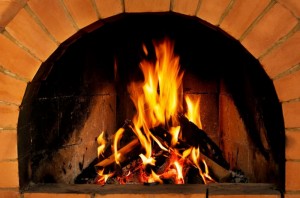Starting a cold fireplace
As the cold weather approaches, Chief Chimney Services in Long Island, New York wants to make sure that you are using your fireplace in an efficient and safe manner. We know there is nothing better than the sound, ambiance, and warmth from a crackling fire in your fireplace. And, there is nothing worse than a house full of smoke and toxic fumes caused by improperly starting a cold fireplace.
There are very specific considerations you need to know and specific techniques to successfully light a fire in a cold fireplace:
Before the cold weather approaches, a thorough inspection and cleaning by a CSIA (Chimney Safety Institute of America) certified chimney technician is a must to ensure your chimney, fireplace, and their components are fully operational and clean. If you avoid this step, you are putting your house and family at risk for a fire, explosion, and toxic gas poisoning. CSIA, in accordance with the National Fire Protection Association (NFPA), urges homeowners to have a yearly inspection and cleaning of their fireplaces and chimneys before using the fireplace for the first time each season. Your skilled CSIA certified chimney technician will identify and repair any potential hazards and remove any blockages from debris or critters so you will be ready for that first fire of the year.
Once you have done your due diligence and had the cleaning and inspection performed and repaired any problems then it’s time to prepare to light your first fire of the season. The first thing to do (and many times overlooked) is OPEN THE DAMPER. The setting for many romantic and utilitarian fires have been ruined as the room filled up with smoke because the damper was not opened before the wood was lit.
The next step is to prime the flue. Here’s why that is so important. Consider that your chimney is located on the outside of your home and surrounded by the cold fall or winter temperatures. Remember, hot air rises and cold air sinks. So when you open the damper, cold air from outside is drawn down your chimney. The cold air forms a barrier as the warm air from inside your home begins to rise. This is called “air sink”. When air sink occurs and the smoke cannot escape out the chimney your house fills up with smoke. The way to avoid air sink is to prime the flue by lighting a rolled up newspaper or piece of seasoned wood and holding it to the damper for 3-4 minutes. You will actually be able to feel the warm and cold air exchange. Once that happens you can proceed to the next step in lighting your fire.
Place your wood atop a bed a couple inches thick of ashes.The ash bed will provide additional insulation to keep your fire burning hotter. Remember the hotter the fire, the more safe and efficient it is.
As the final step is to build what is known as an “upside down” fire:
Stack large or split logs next to one another tightly to form your bottom layer. Place slightly smaller logs/split logs perpendicular to the bottom layer to form the 2nd layer.
Repeat this process using smaller and smaller pieces to a reasonable height – usually 2-5 layers depending on:
- The size of your fireplace
- How much wood you have on hand
- How long you want the fire to burn
At the top add strips or crumpled newspaper and dry kindling.
Light the newspaper/kindling at the top and watch that baby burn itself down.
By following these recommendations when you initially start your cold fireplace, you will be able to truly appreciate and enjoy romantic and utilitarian fires all season long.

